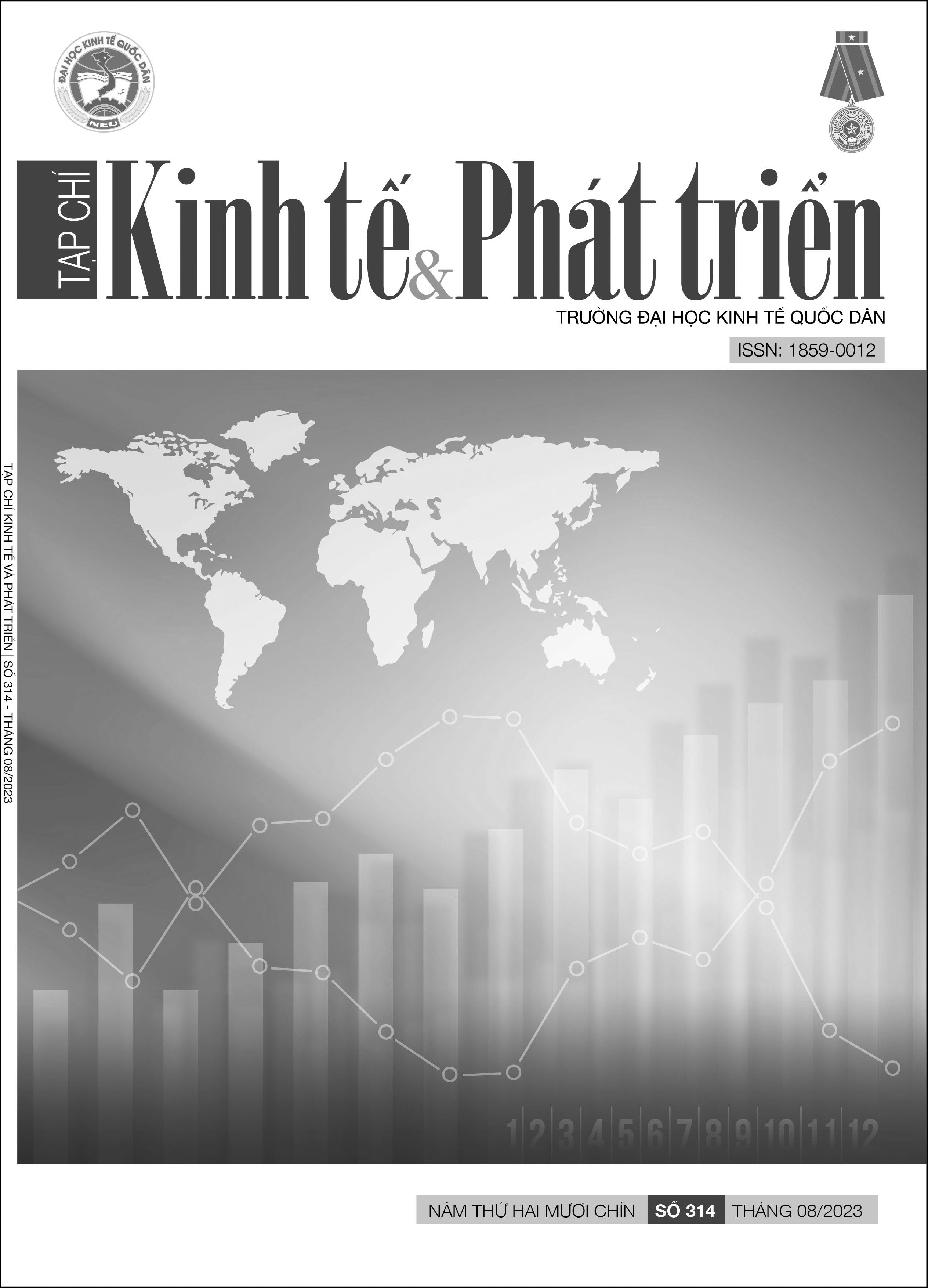Nhân tố ảnh hưởng đến việc tuân thủ pháp luật bảo hiểm xã hội của doanh nghiệp tại Vĩnh Long
DOI:
https://doi.org/10.33301/JED.VI.1118Từ khóa:
Bảo hiểm xã hội, doanh nghiệp, Vĩnh LongTóm tắt
Bài viết phân tích các nhân tố ảnh hưởng đến việc tuân thủ pháp luật bảo hiểm xã hội của các doanh nghiệp tại tỉnh Vĩnh Long. Nghiên cứu sử dụng mô hình hồi quy Binary Logistic để ước lượng các nhân tố tác động đến việc tuân thủ pháp luật bảo hiểm xã hội của 320 doanh nghiệp có tham gia bảo hiểm xã hội. Kết quả nghiên cứu cho thấy có 7 nhân tố tác động đến việc tuân thủ pháp luật bảo hiểm xã hội của các doanh nghiệp, trong đó: quy mô doanh nghiệp, tỷ lệ lao động nữ, tiền phạt tác động tiêu cực với việc tuân thủ pháp luật bảo hiểm xã hội. Ngược lại, thời gian hoạt động của doanh nghiệp, lợi nhuận, ngành nghề kinh doanh, loại hình doanh nghiệp tác động tích cực với việc tuân thủ pháp luật bảo hiểm xã hội của doanh nghiệp. Từ những kết quả trên, nghiên cứu đề xuất một số giải pháp nhằm giảm thiểu tình trạng nợ bảo hiểm xã hội của các doanh nghiệp trên địa bàn tỉnh Vĩnh Long trong thời gian tới.
Tài liệu tham khảo
Allingham, M. G., & Sandmo, A. (1972), ‘Income tax evasion: A theoretical analysis’, Journal of public economics, 1(3-4), 323-338.
Becker, G. S. (1968), ‘Crime and punishment: An economic approach’, Journal of political economy, 76(2), 169-217.
Braithwaite, V. (2003), ‘Dancing with tax authorities: Motivational postures and non-compliant actions’, Taxing democracy, 3, 15-39.
Gao, Q., & Rickne, J. (2014), ‘Firm ownership and social insurance inequality in transitional China: Evidence from a large panel of firm-level data’, European Journal of Social Security, 16(1), 2-25.
Green, S. B. (1991), ‘How many subjects does it take to do a regression analysis’, Multivariate behavioral research, 26(3), 499-510.
Lee, S., & Torm, N. (2017), ‘Social security and firm performance: The case of Vietnamese SMEs’, International Labour Review, 156(2), 185-212.
Maitra, P., Smyth, R., Nielsen, I., Nyland, C., & Zhu, C. (2007), ‘Firm compliance with social insurance obligations where there is a weak surveillance and enforcement mechanism: Empirical evidence from Shanghai’, Pacific Economic Review, 12(5), 577-596.
Mares, I. (2003), ‘The sources of business interest in social insurance: Sectoral versus national differences’, World Politics, 55(2), 229-258.
Nielsen, I., & Smyth, R. (2008), ‘Who bears the burden of employer compliance with social security contributions? Evidence from Chinese firm level data’, China Economic Review, 19(2), 230-244.
Nyland, C., Smyth, R., & Zhu, C. J. (2006), ‘What determines the extent to which employers will comply with their social security obligations? Evidence from Chinese firm‐level data’, Social Policy & Administration, 40(2), 196-214.
Nyland, C., Thomson, S. B., & Zhu, C. J. (2011), ‘Employer attitudes towards social insurance compliance in Shanghai, China’, International Social Security Review, 64(4), 73-98.
Nguyễn, H. T., Nguyên, P. Đ., & Ngọc, N. T. N. (2019), ‘Các yếu tố ảnh hưởng đến gánh nặng bảo hiểm xã hội của các doanh nghiệp nhỏ và vừa tại Việt Nam’, Tạp chí khoa học Đại học mở Thành Phố Hồ Chí Minh-khoa học xã hội, 14(1), 5-15.
Rickne, J. (2013), ‘Labor market conditions and social insurance in China’, China Economic Review, 27, 52-68.
Tybout, J. R. (2000), ‘Manufacturing firms in developing countries: How well do they do, and why?’, Journal of Economic literature, 38(1), 11-44.
Vass, A. A. (2011), ‘The elusive universal post-mortem interval formula’, Forensic science international, 204(1-3), 34-40.





